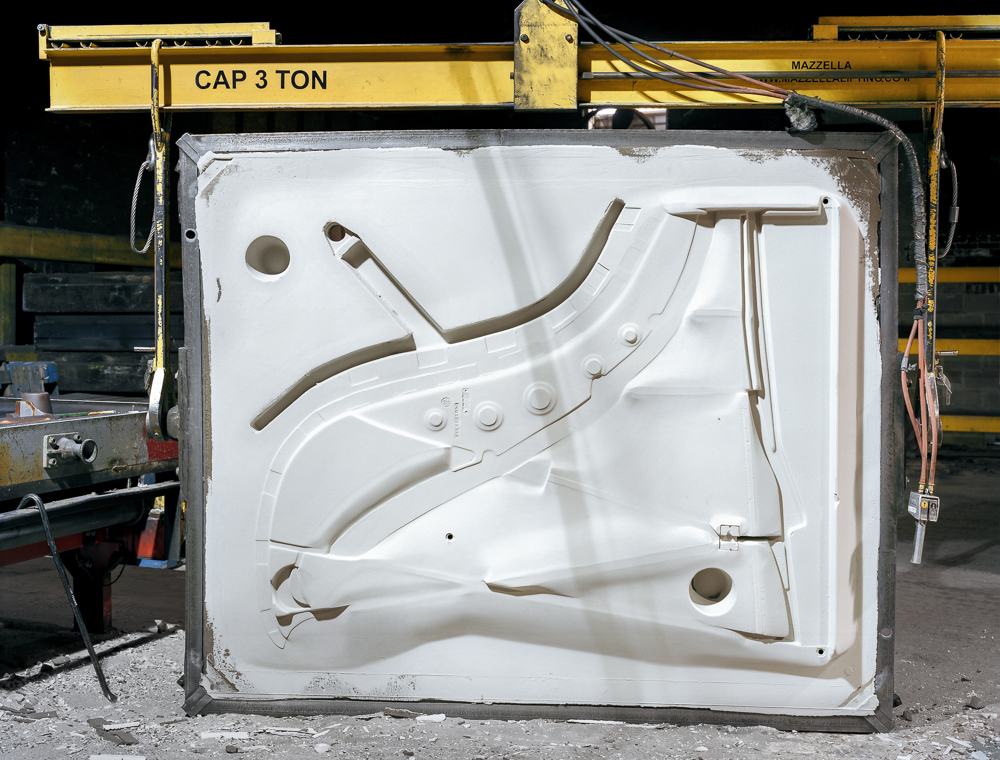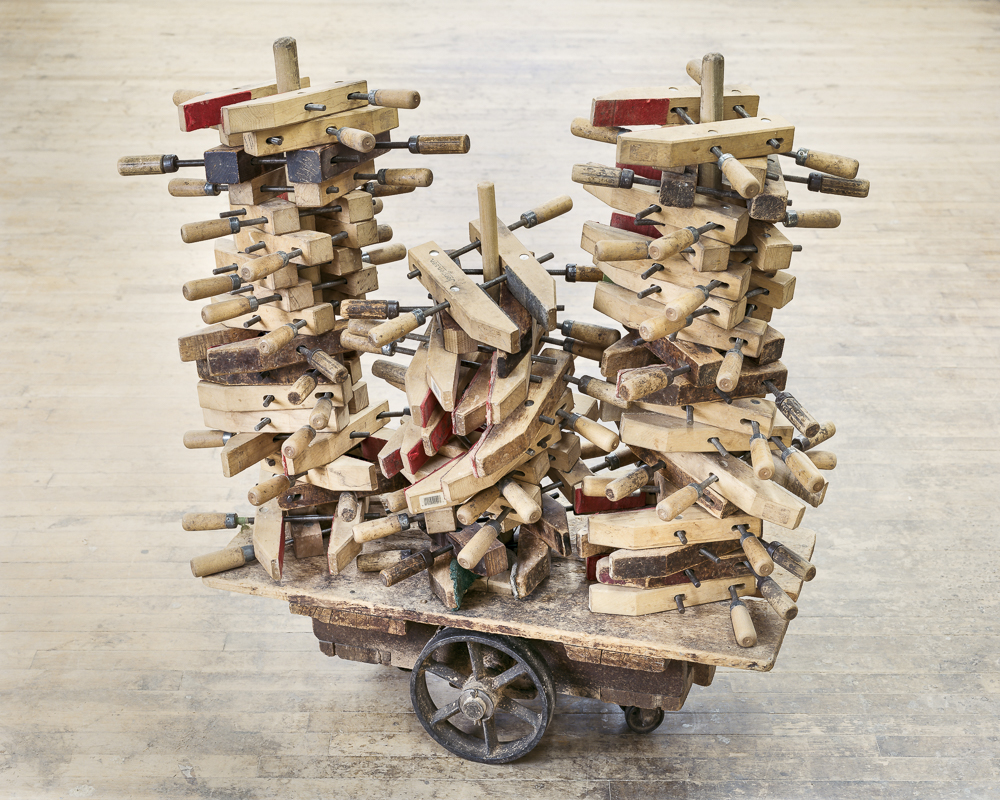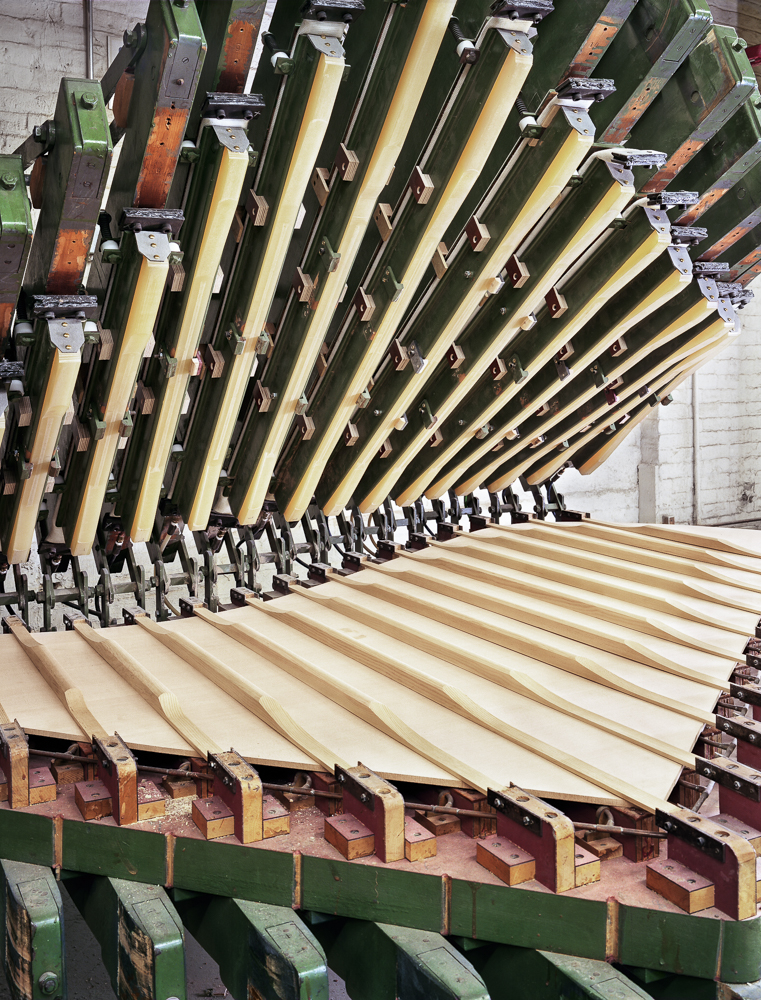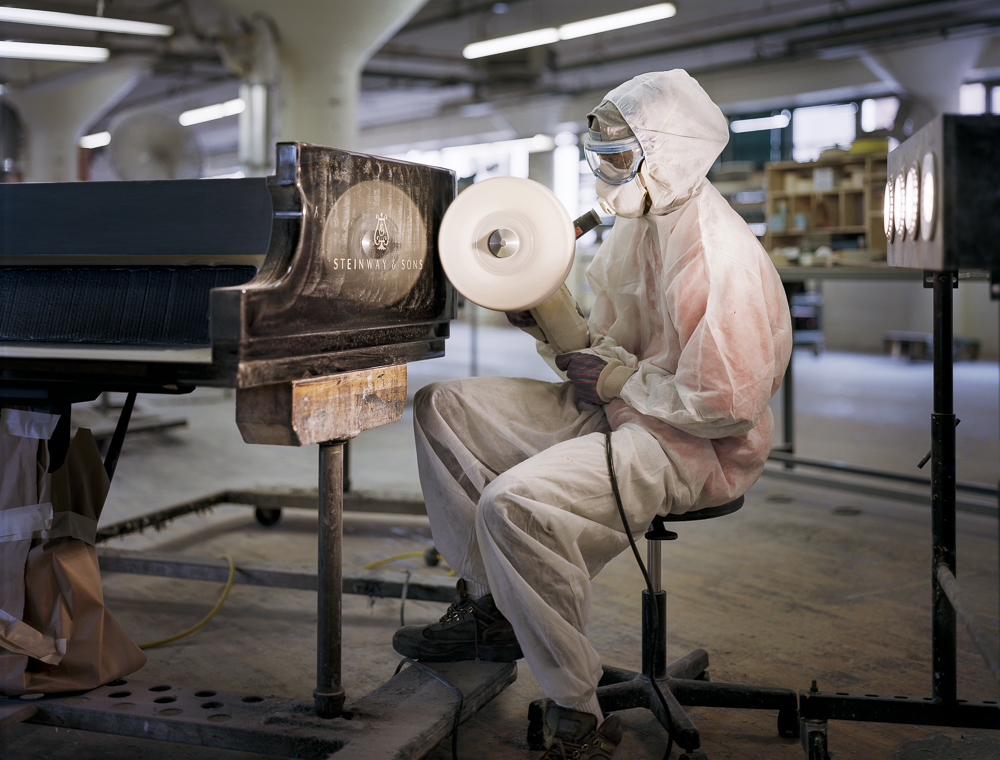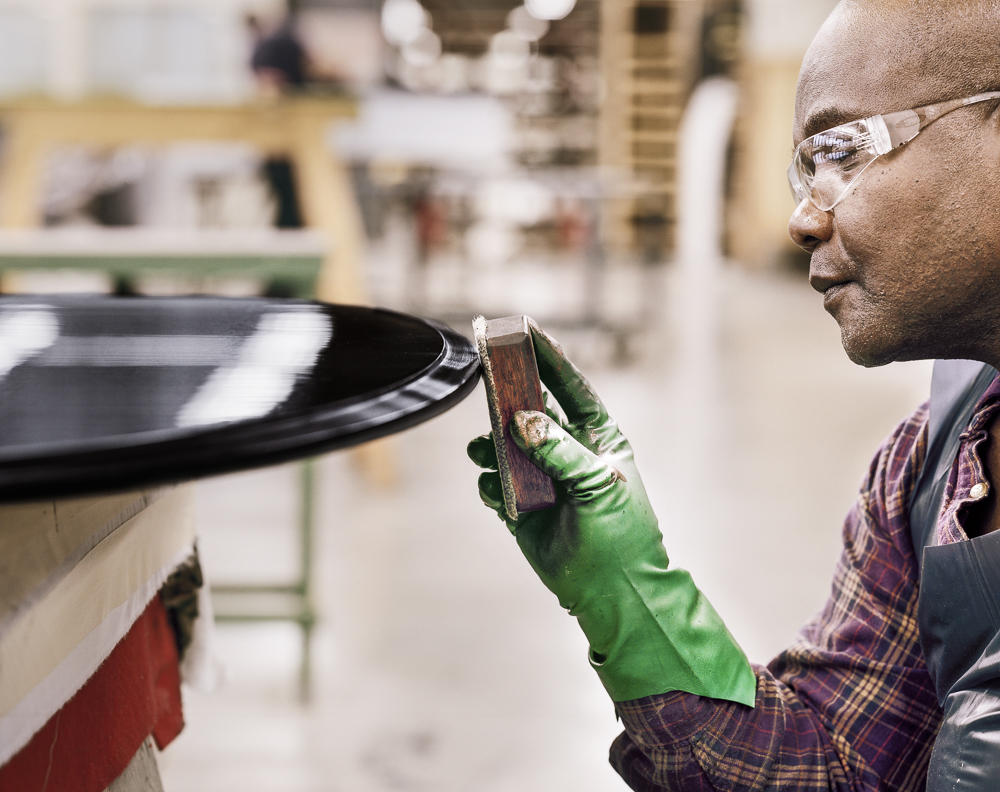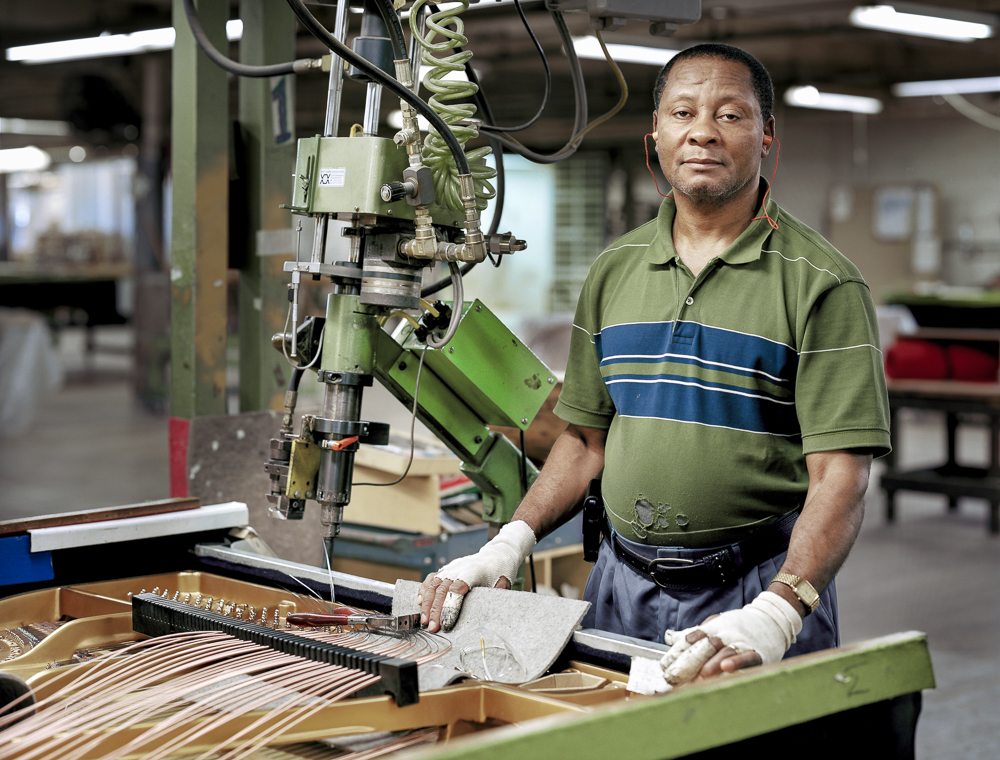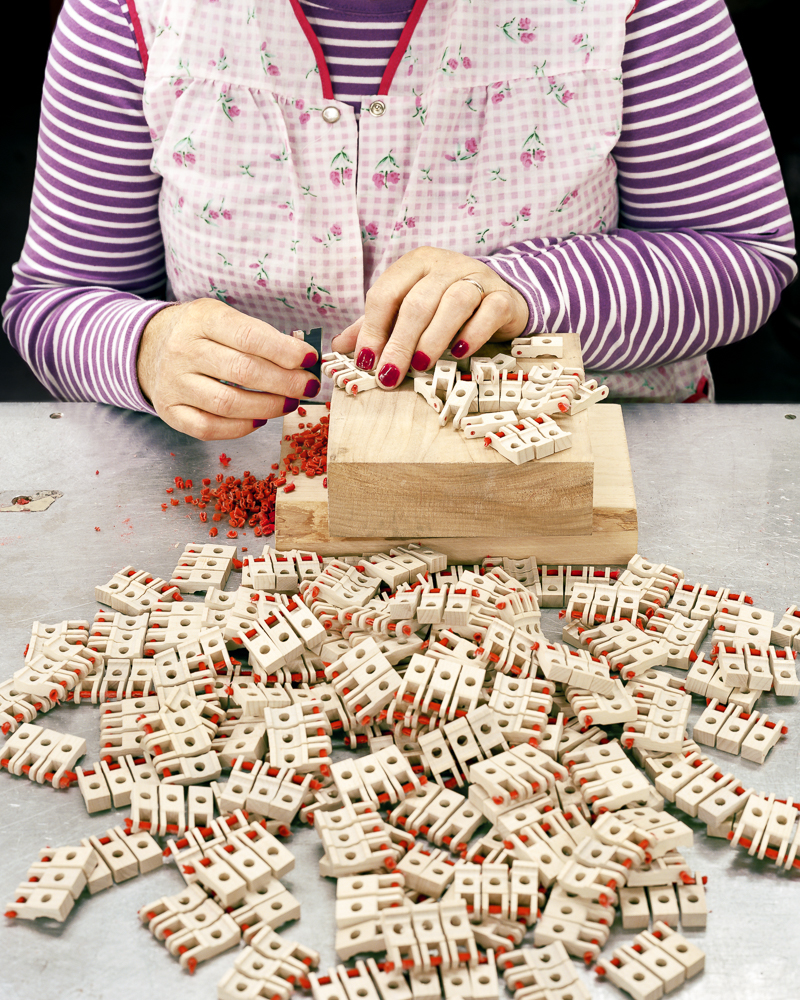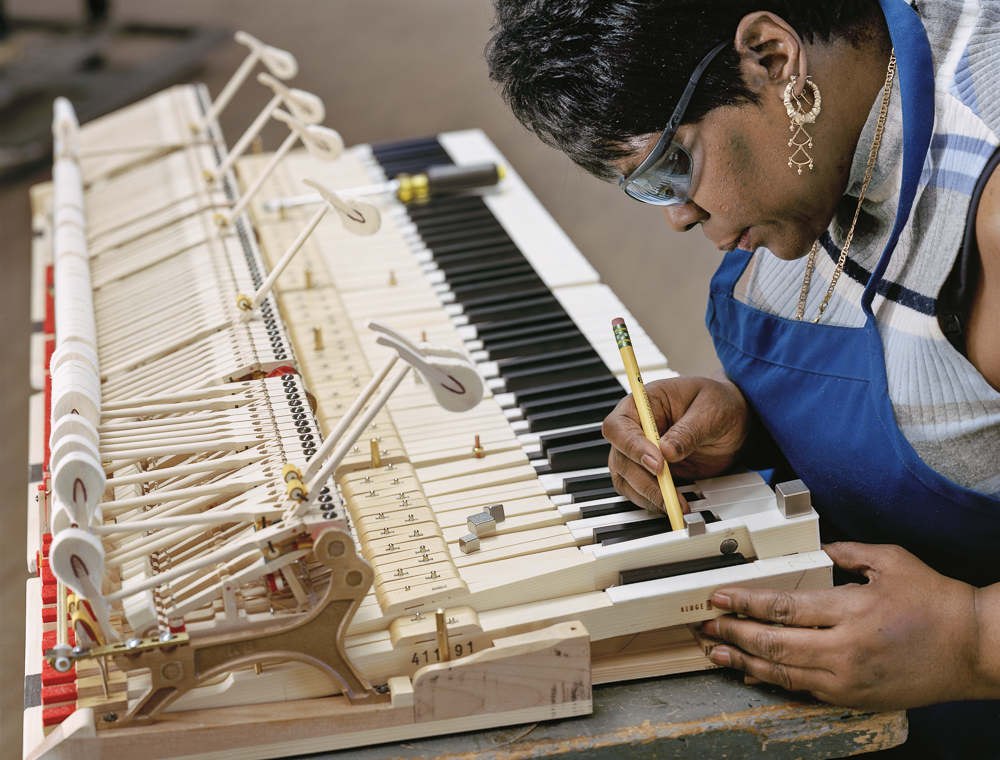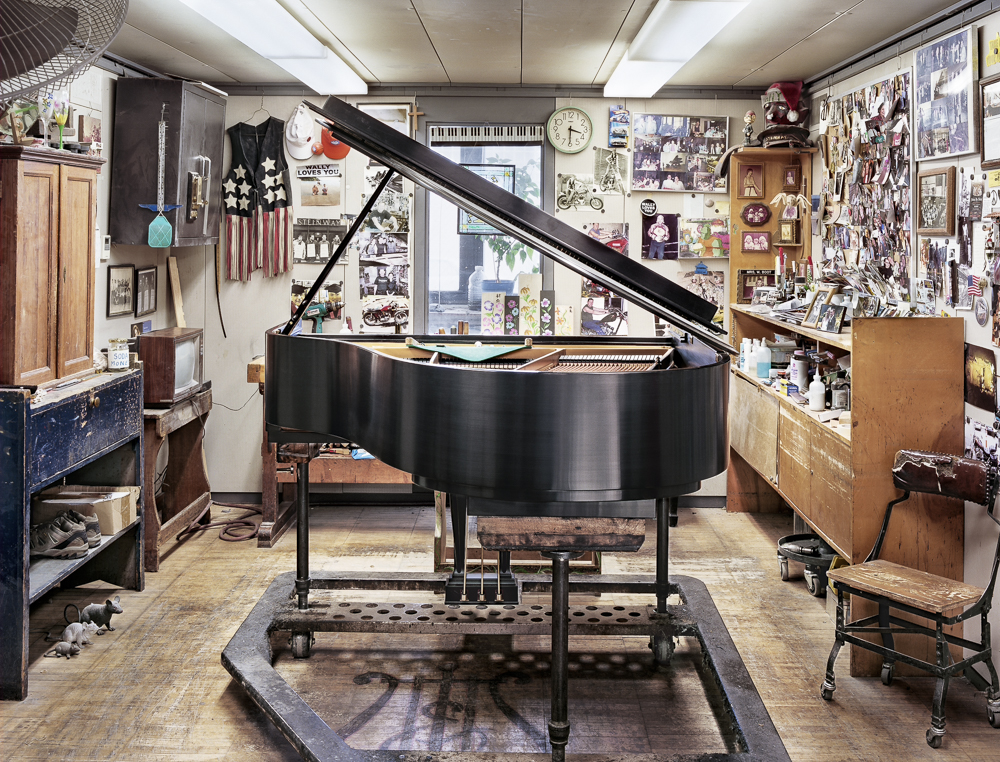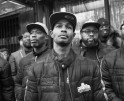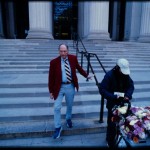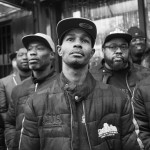Christopher Payne: Making Steinway
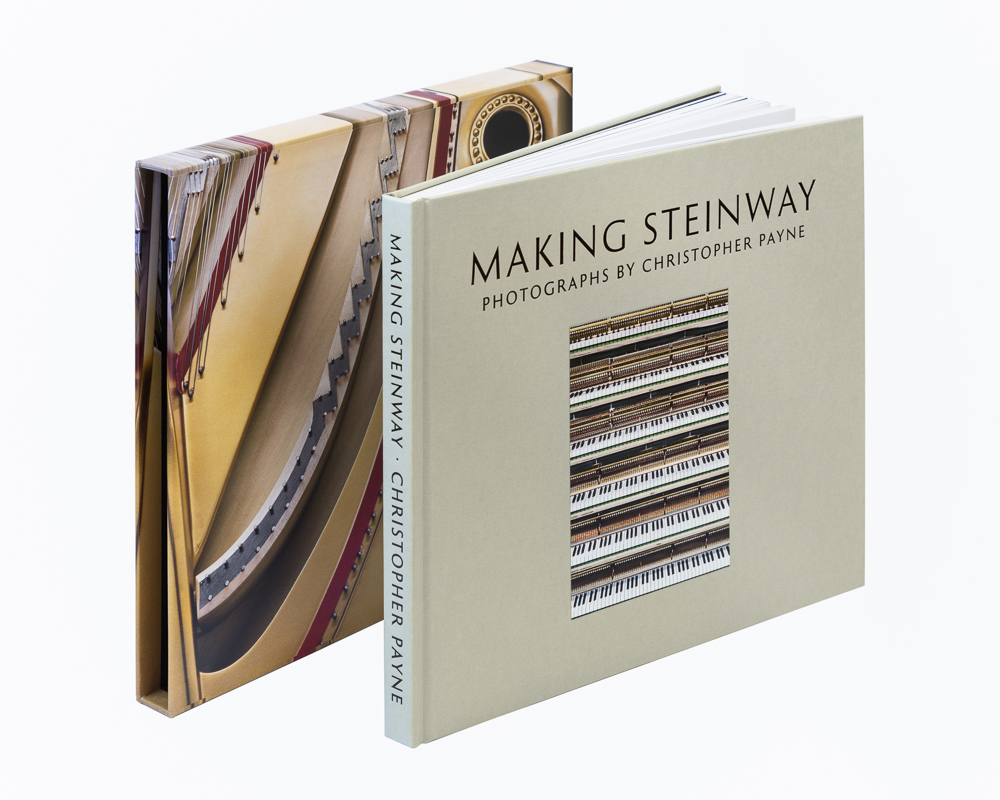 The Steinway piano has been a presence in my life for as long as I can remember: years of piano lessons, a mother who was a music teacher, and marrying a man who came to our relationship complete with a Steinway piano. I’ve always thought of Steinway pianos and Singer sewing machines as great American companies that transformed the quality of our lives, allowing for thousands of fledgling musicians and fashions designers to practice their crafts within the confines of their own homes. Photographer Christopher Payne has had similar connections to the Steinway legacy and has produced a stellar monograph capturing the diminishing art of crafting a piano from scratch. Making Steinway is his fourth book and reflects Christopher’s focus on architecture and the design process, but also gives homage to an instrument that connects him to his parents and his past.
The Steinway piano has been a presence in my life for as long as I can remember: years of piano lessons, a mother who was a music teacher, and marrying a man who came to our relationship complete with a Steinway piano. I’ve always thought of Steinway pianos and Singer sewing machines as great American companies that transformed the quality of our lives, allowing for thousands of fledgling musicians and fashions designers to practice their crafts within the confines of their own homes. Photographer Christopher Payne has had similar connections to the Steinway legacy and has produced a stellar monograph capturing the diminishing art of crafting a piano from scratch. Making Steinway is his fourth book and reflects Christopher’s focus on architecture and the design process, but also gives homage to an instrument that connects him to his parents and his past.
Christopher Payne is a New York City based photographer specializing in the documentation of America’s vanishing architecture and industrial landscape. Trained as an architect, he is the author of several books: New York’s Forgotten Substations: The Power Behind the Subway, Asylum: Inside the Closed World of State Mental Hospitals, and North Brother Island: The Last Unknown Place in New York City. Payne’s current work has veered away from the documentation of the obsolete towards a celebration of craftsmanship and manufacturing in the United States. In progress is a series about the American textile industry, and just completed is his fourth book, Making Steinway, a tour through the famous Steinway piano factory in Queens. Payne has been awarded grants from the Graham Foundation, the New York State Council on the Arts, and the New York Foundation for the Arts. His work has been featured in publications around the world and several times in the New York Times Magazine and the New Yorker.
Making Steinway
The kind of manufacturing and craftsmanship that happens at One Steinway Place in Astoria, New York, where people transform raw, often messy materials into some of the finest musical instruments in the world, has nearly vanished from the American workplace. This concerns me deeply, not only because I come from a musical family in which such craftsmanship was revered, but because I live in a time when fewer and fewer people make their own music.
I first toured the Steinway factory in 2002, while still working as an architect, and for many years I kept thinking about what I had seen, given my interest in assembly and appreciation of the built form. After my father and grandmother passed away—both were pianists—my memories of the factory took on a more profound, spiritual importance and I felt an obligation to return to take pictures of the instrument so deeply connected to my family.
The piano is something we all know and love as a whole; its deceptively simple, iconic form is instantly recognizable. But my photographs look in a different direction: a deconstruction of the piano’s unseen constituent parts and a glimpse into the skilled labor required to make them. While my architectural training helped me to understand how the piano works on a technical level, it remains even more of a mystery to me now than it was before. After spending countless hours photographing the choreographies of production and scrutinizing the parts and pieces that will never be visible outside the factory, I came to realize that a piano is one of the supreme acts of human invention and imagination.
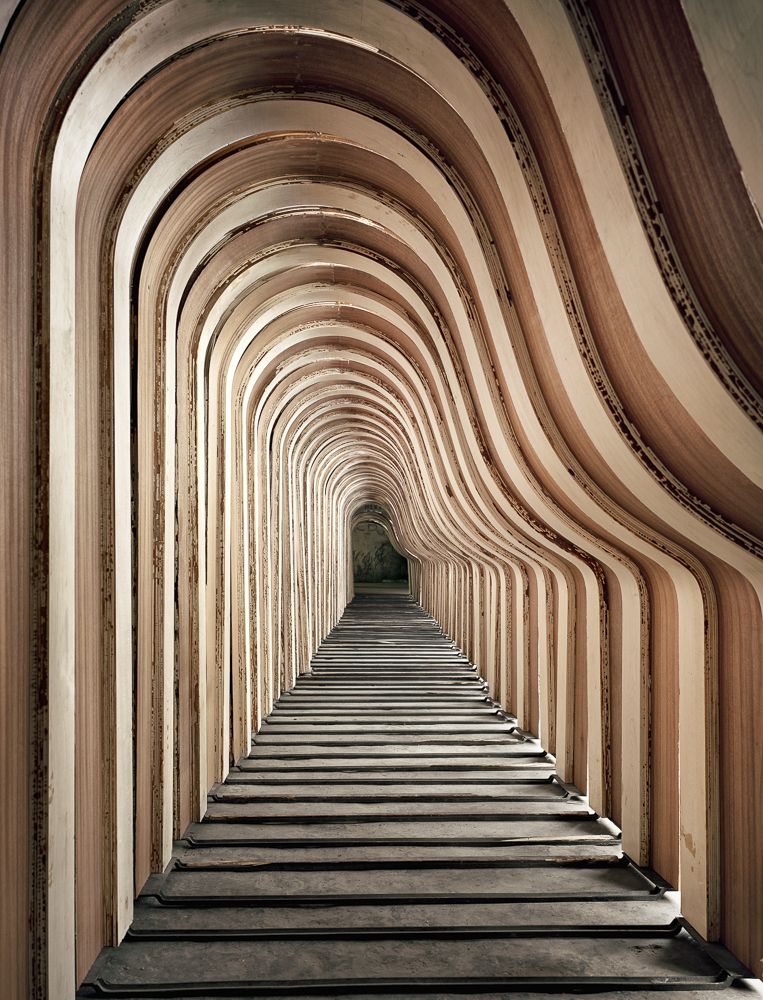
©Christopher Payne, Piano rims in rim conditioning room (Steinway & Sons piano factory, Astoria, NY)

©Christopher Payne, Galo Torres, “bellyman”, notching the bridge on a soundboard (Steinway & Sons piano factory, Astoria, NY)
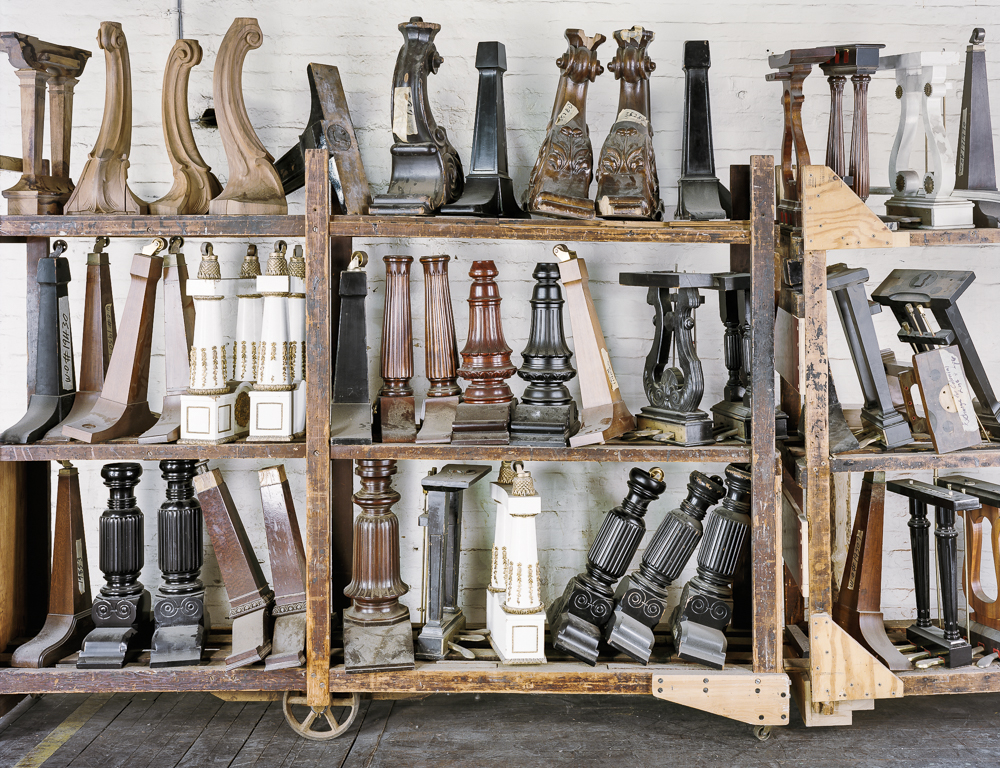
©Christopher Payne, Legs and lyres used for restoration and reference (Steinway & Sons piano factory, Astoria, NY)
Posts on Lenscratch may not be reproduced without the permission of the Lenscratch staff and the photographer.
Recommended
-
Kevin Cooley: In The Gardens of EatonJanuary 8th, 2026
-
William Karl Valentine: The Eaton FireJanuary 7th, 2026
-
Sean Stanley: Ashes of SummerJanuary 6th, 2026
-
Nathan Bolton in Conversation with Douglas BreaultJanuary 3rd, 2026
-
Andrew Lichtenstein: This Short Life: Photojournalism as Resistance and ConcernDecember 21st, 2025



